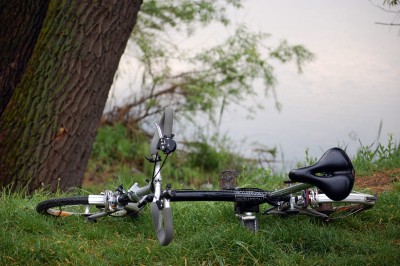Is bicycling actually dangerous or is it a matter of perception? It is both. Everything in life is a risk. It is simply a matter of degree, and for each thing we do, we weigh the odds.
Physical activity carries an inherent risk of bodily harm. There is no way around it. No amount of care can prevent all injuries.
An element of luck is involved in determining whether a cyclist will be injured. The cyclist could be in the wrong place at the wrong time. Equipment could fail unexpectedly. A motorist could act negligently, with disregard for the cyclist’s welfare. Or a cyclist could make a catastrophic error.
Each of these events can have a negative outcome. But how likely are they?
The degree of risk varies with time and place. Some risks can be mitigated with proper preparation, such as maintaining one’s bicycle. Others can’t.
Regardless, Boston is perceived as a very dangerous place to ride a bike – but statistics tell one story and legend another.
“In 2005, there were 6 bicycle deaths among MA residents and in FY 2005 there was a combined total of 9,110 inpatient hospitalizations, observation stays and emergency department visits for nonfatal bicycle-related injuries.”
The number of non-fatal bicycle-related injuries looks bad until you realize that according to the Centers for Disease Control, “In 2001, children 15 years and younger accounted for 59% of all bicycle-related injuries seen in US emergency departments.” Therefore, the majority of bicycle-related injuries do not involve adults riding in traffic.
According to the National Highway Traffic Safety Administration, the number of U.S. bicyclists killed in crashes steadily decreased from 1994 to 2009, with 803 deaths in 1994 and 630 deaths in 2009.
“About 1.7 percent of all traffic crash fatalities in 2007 were pedalcyclists. Delaware, North Dakota, South Dakota, Vermont, and Wyoming reported no pedalcyclists killed.” [States 2007]
Only a small percentage of traffic deaths involve cyclists. But, this does not seem to allay the fears of all but the most devoted cyclists.
Fear of urban cycling can be attributed more to uncertainty and the aggressiveness of drivers than actual danger. Who hasn’t seen a driver yelling out their car window at a cyclist?
The relative size of cars to bicycles is intimidating. Cultural considerations, such as the view that bicycles exist for recreation and don’t belong on the road can also cast doubt on the safety of riding. In addition, most non-cyclists hold strong beliefs about Lycra clad scofflaw cyclists racing through city streets at breakneck speed. Such behavior creates an impression of cyclists as reckless, which taints motorists’ attitudes towards all cyclists.
Overall, when talking about urban riding, perceptions and fears about safety are primarily what discourages people from riding. Anything could happen, but that doesn’t mean it will.
However, some people have real things to fear when riding a bicycle. Occasionally, the unexpected happens. Take a cyclist in South Africa, for instance. He was bicycling to work one morning when he heard a noise behind him. When he looked back, he saw a leopard coming at him. In an act of self-preservation, he used his bicycle as a shield to keep the leopard from killing him. Despite deep scratches to his head and face, he survived.
According to the article, nine out of ten leopard attacks are fatal. This man is lucky to have been a quick thinking cyclist who was able to fend off a leopard with his bicycle. Apparently, bicycles have more uses than most of us imagined.
Next time someone scolds you for riding a bicycle in Boston – or any major U.S. city for that matter – just remind them that cyclists have faced, and survived, worse things than urban jungles.





2 Responses to And I Thought That Riding a Bicycle in Boston Was Dangerous